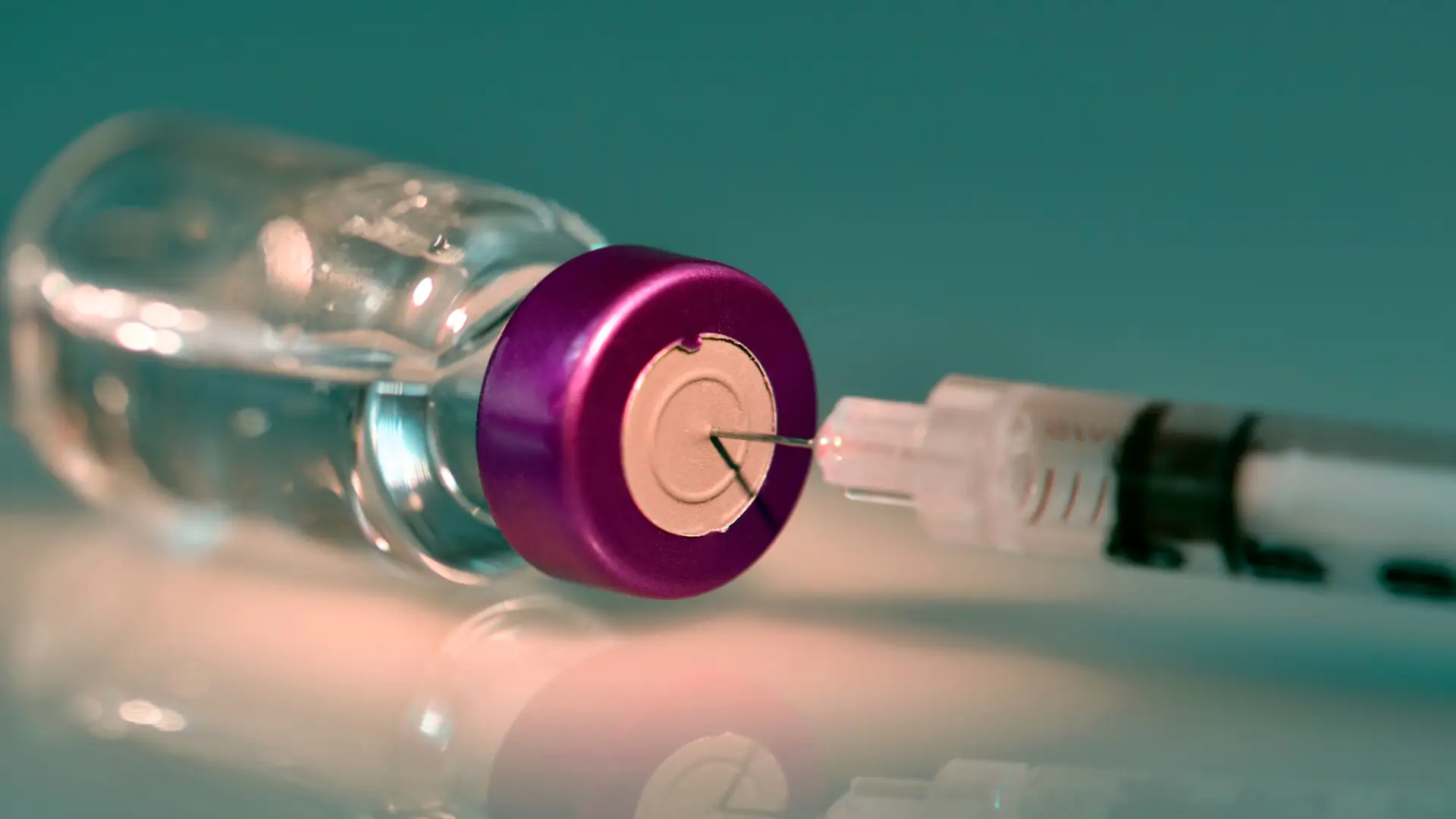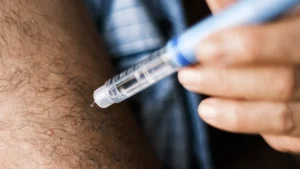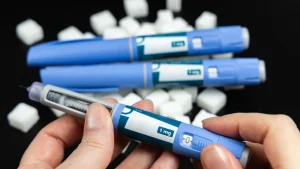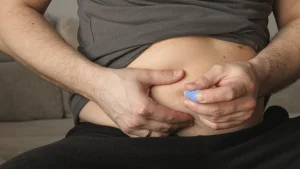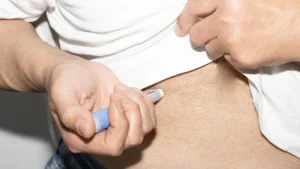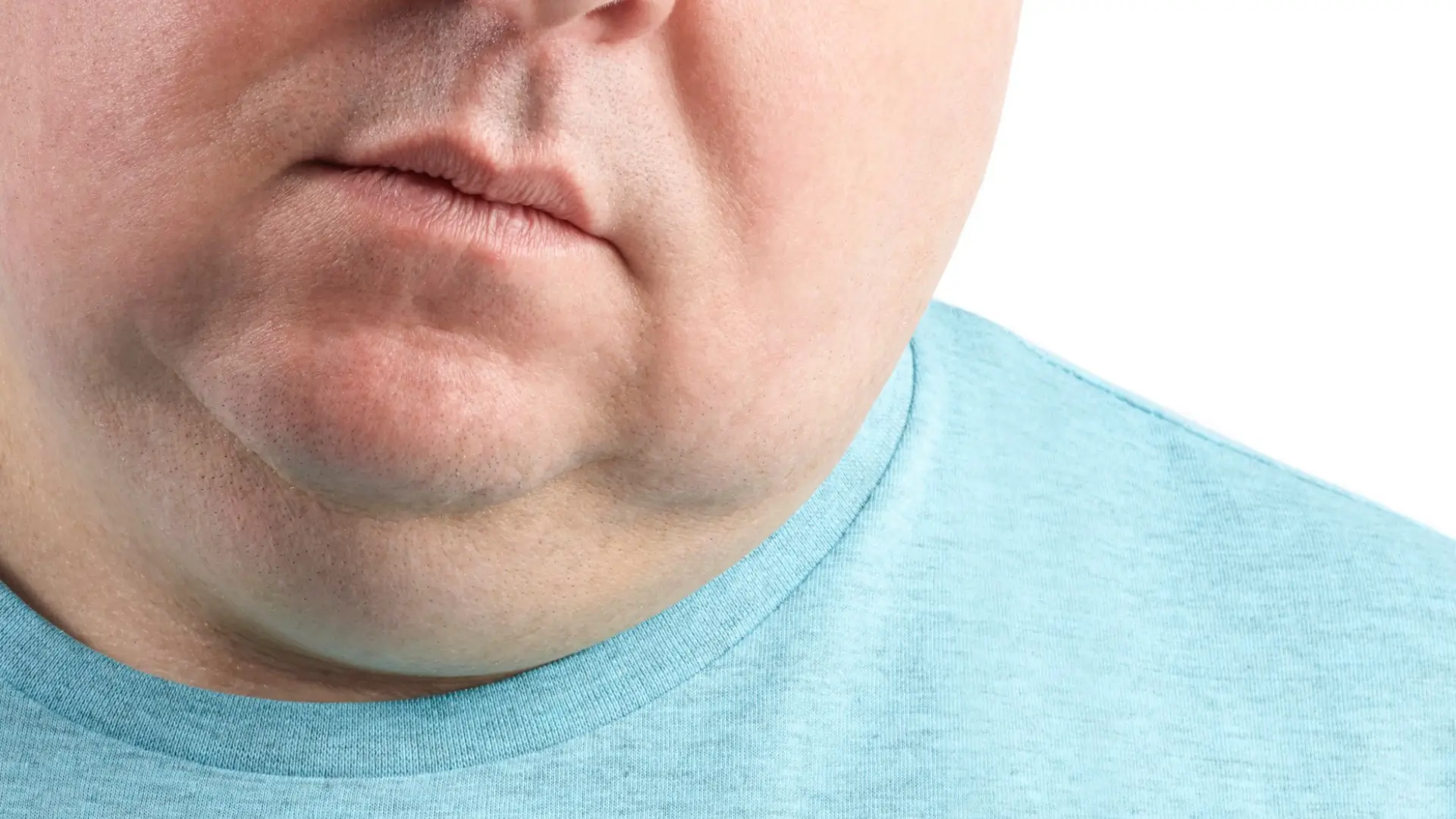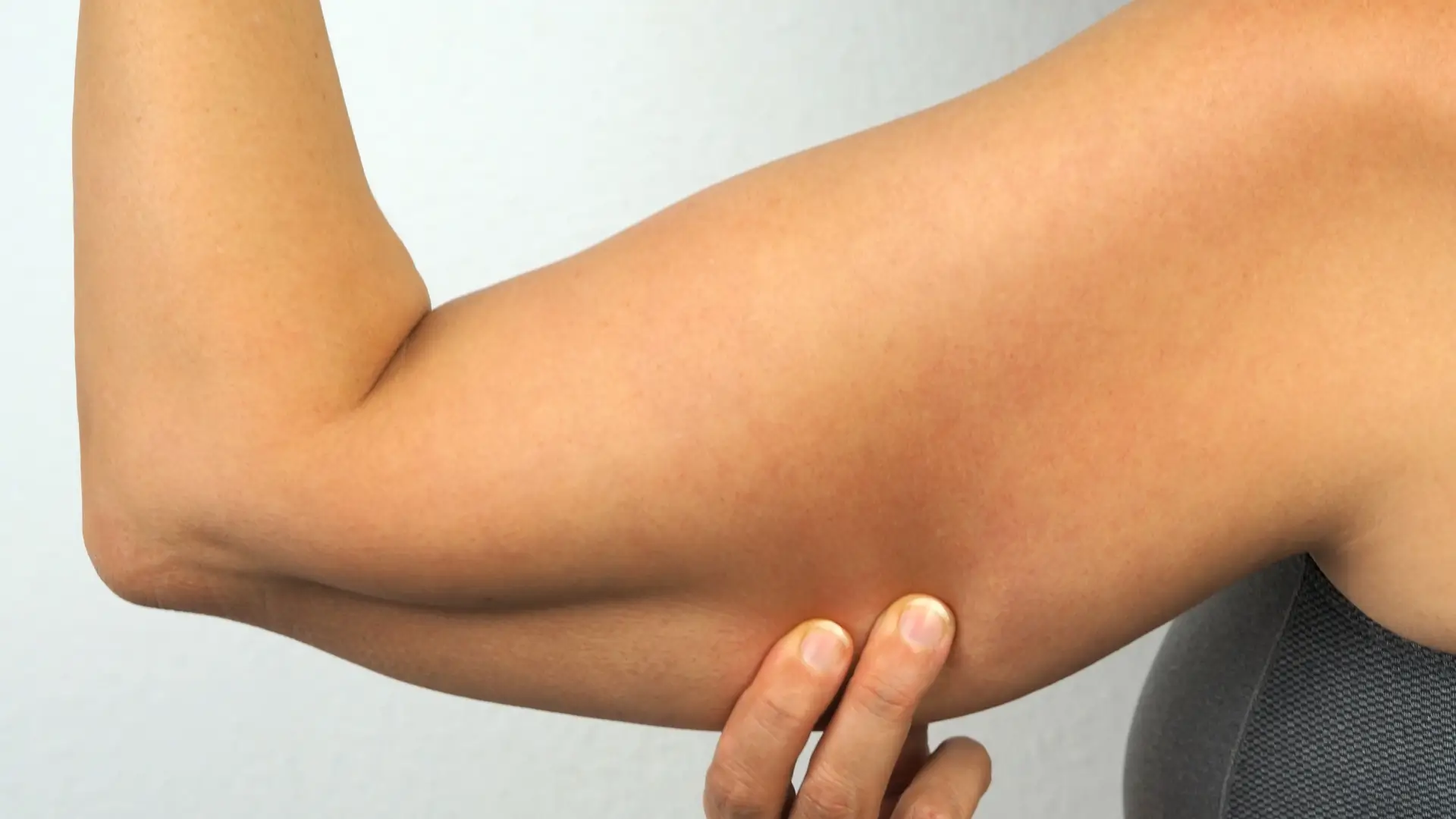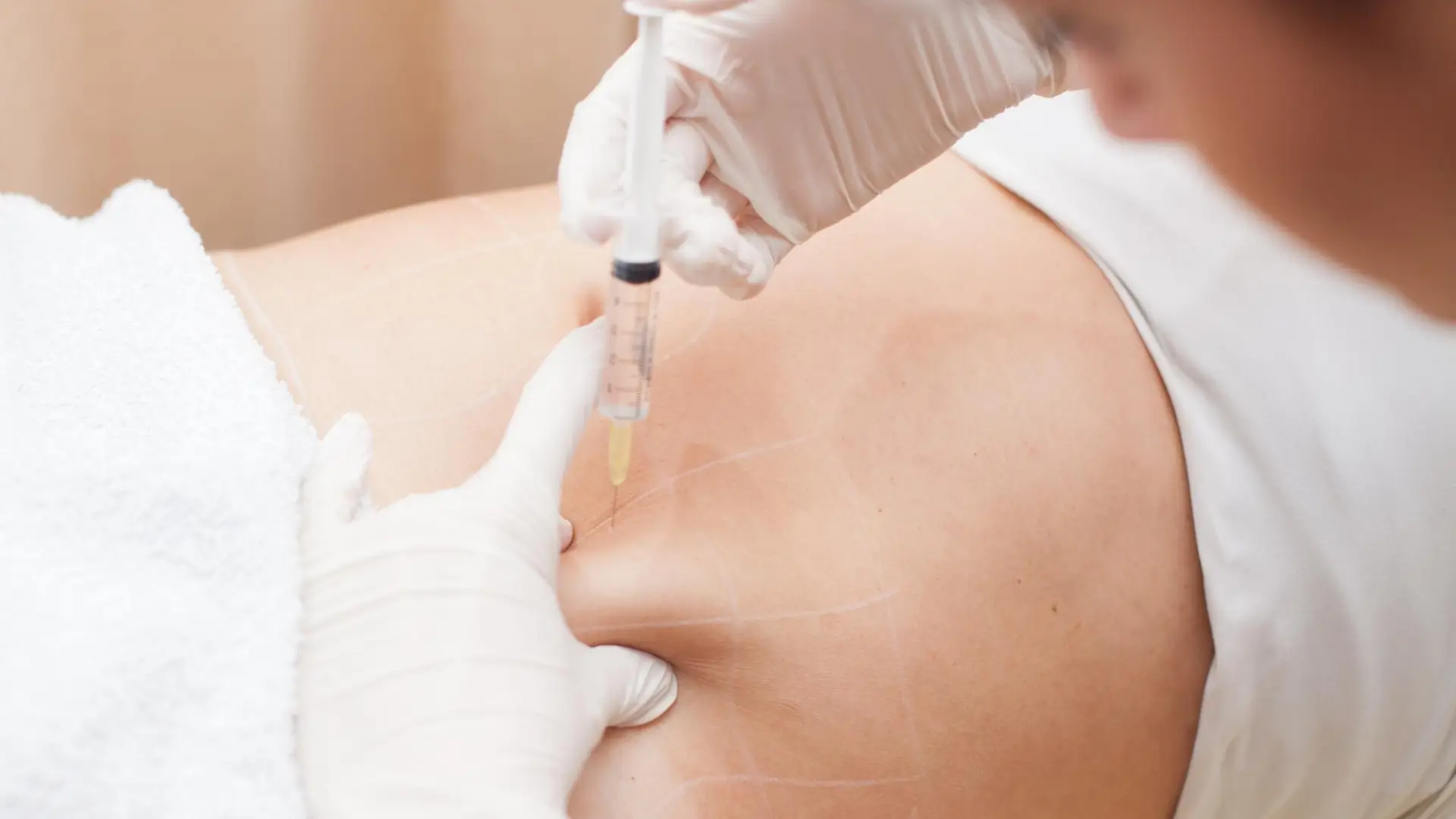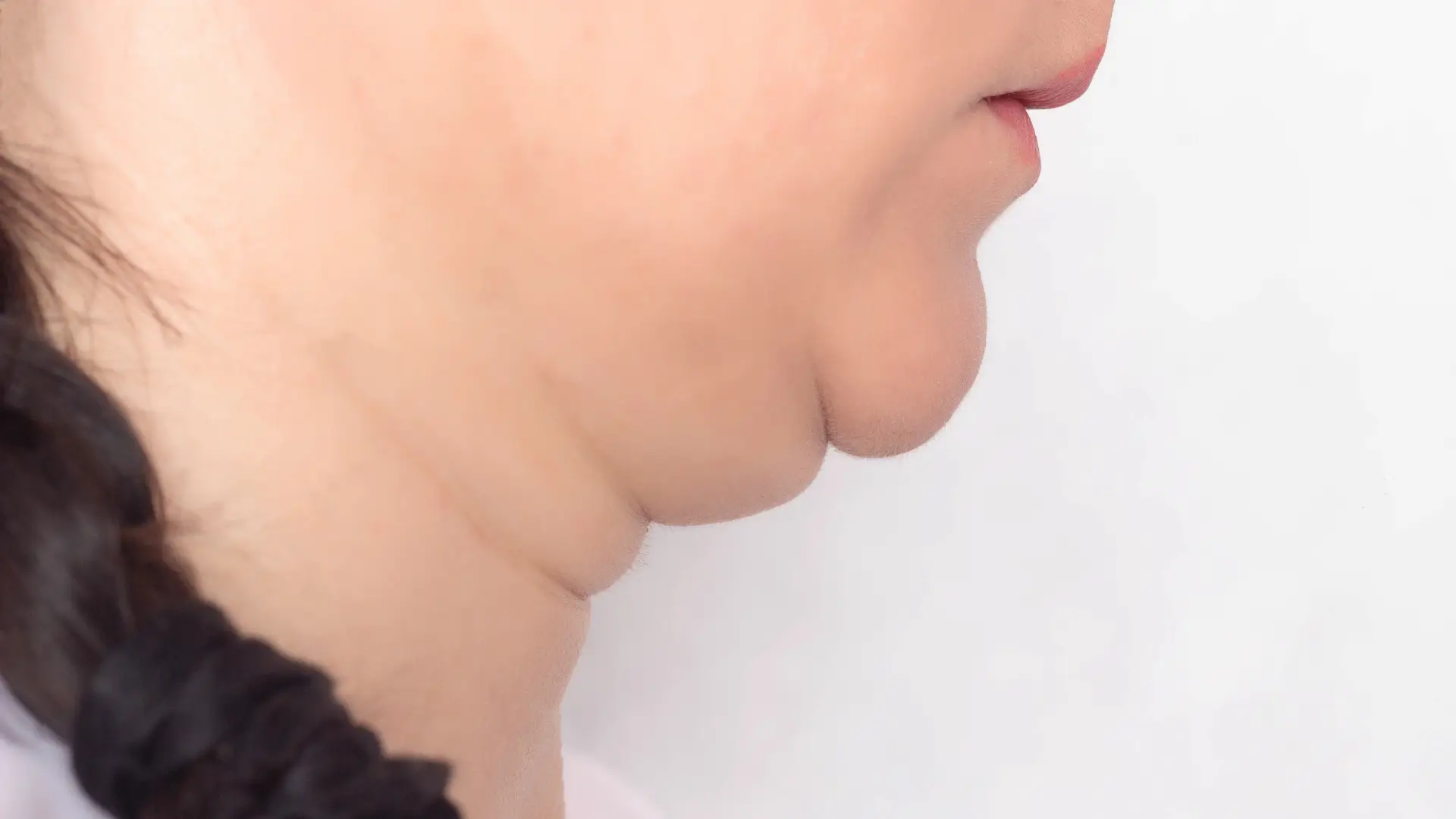Precision matters in aesthetics, especially when injectables are involved. According to Goodman et al., writing in the Australasian Journal of Dermatology, more than 8.5 million nonsurgical injectable procedures were performed globally in 2017. Notably, most reported adverse events were linked to incorrect dosing or poor injection technique. These findings highlight just how important it is for practitioners to follow evidence-based guidelines.
This is particularly true for minimally invasive fat-reduction treatments like Aqualyx, where safe, consistent outcomes rely on accurate dosing, proper product placement, and adherence to approved injection protocols.
In this article, we’ll break down the essentials of Aqualyx dosage: what the research says, how to approach volume planning across different body areas, and how clinicians can refine their technique to deliver both safe and satisfying contouring results.
Key Takeaways
- Aqualyx is a non-surgical fat-dissolving injectable that contains 600 mg of sodium deoxycholate per 8 mL vial in a galactose-based gel matrix.
- The formulation is designed to support controlled fat breakdown and may help reduce irritation, swelling, and nodules when used correctly.
- Treatment dosage should be customized based on fat volume, treatment area size, and patient anatomy, with 1–2 vials used per session.
- Smaller zones like the chin or arms require 5–10 mL, while larger areas such as the abdomen may need up to 20 mL per treatment.
- Grid mapping and fan techniques are used to guide injections, with microboluses of 0.2–0.5 mL spaced 1 cm apart for even distribution.
- Use a needle (25–27G) for smaller areas or a blunt cannula (22–25G) with 0.5–1 mL per pass for larger regions.
- Do not exceed 40 mL per session or 25 mL per anatomical zone to reduce risk of complications.
- Treatments should be spaced four weeks apart to allow lymphatic clearance and proper tissue recovery.
- Common side effects include swelling, bruising, and nodules, but rare adverse events may occur with improper technique.
- Proper training, assessment, technique, and follow-up are essential to ensure safe, effective fat reduction with Aqualyx.
About: Medica Depot is your trusted all-in-one supplier, offering a range of high-quality medical injectables and supplies. If you’re looking to buy Aqualyx, contact Medica Depot’s sales representatives and they will guide you on how to do so. Whether for health professionals, plastic surgeons, dermatologists, licensed estheticians, or other specialists, we can offer genuine, brand-name products you may need. With Medica Depot, we prioritize serving you better to improve the patient’s quality of life.
Aqualyx Dosage: Product Composition & Concentration
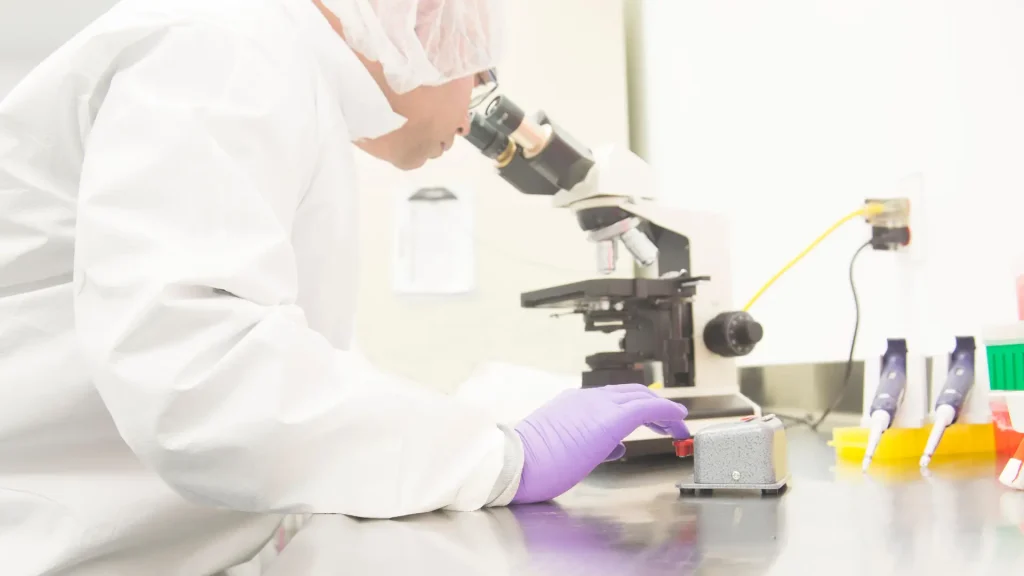
For medical professionals performing body contouring, understanding the composition and concentration of Aqualyx is essential. Each box contains 8 mL vials, which allow for dosing adjustments based on the treatment area—whether it’s a full abdomen or a smaller region like the chin or arms.
The injectable solution contains the following:
- A polymer blend of 3,6-Anhydro-L-Galactose and D-Galactose (0.5%)
- Sodium chloride (0.8%)
- Buffer salts (4.2%)
- Sodium deoxycholate (as sodium salt of 3α,5α,12α–3,12-dihydroxy-5-cholan-24-acid) (7.5%, or 600 mg per 8 mL vial)
- Water for injection
The galactose-based gel matrix stabilizes the deoxycholate and is designed to help reduce irritation while promoting a more controlled release. This formulation supports gradual fat cell disruption and may reduce the likelihood of treatment-related inflammation, such as swelling or tenderness.
Aqualyx Dosage: Recommended Volumes & Injection Patterns
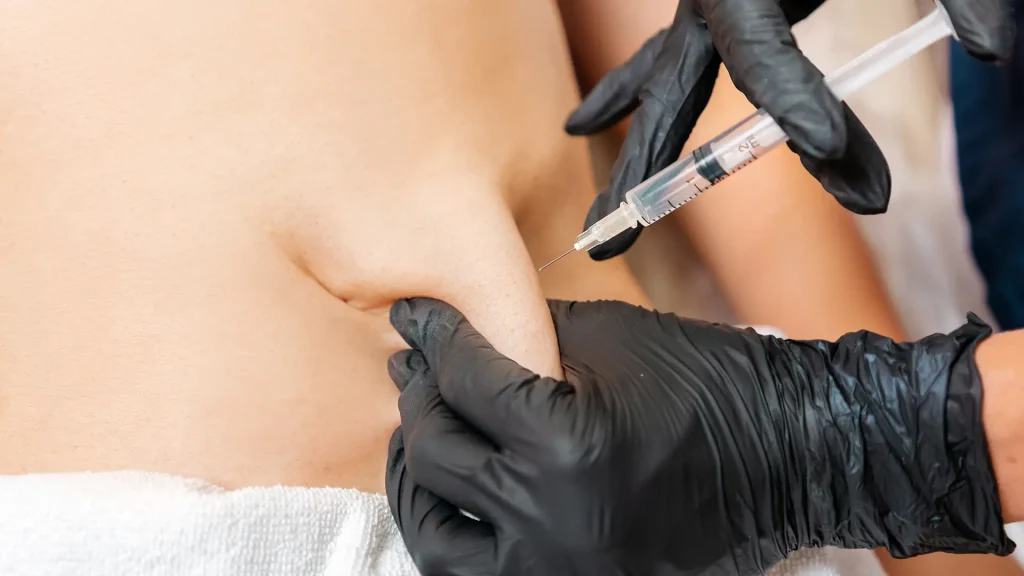
To achieve effective results for Aqualyx arms or abdomen, practitioners must carefully assess the treatment area, fat volume, and skin condition before deciding on the total Aqualyx dosage. Administered correctly, Aqualyx initiates chemical adipocytolysis in targeted fat deposits and encourages progressive contouring over time.
In most cases:
- Smaller areas (e.g., chin, jowls) require around 5–10 mL
- Larger regions (e.g., abdomen, flanks, thighs) may need up to 20 mL
- A typical session involves 1–2 vials (8–16 mL) based on coverage
- Sessions should be spaced at four-week intervals to allow for fat clearance and tissue recovery
- Treatment plans range from 2–4 sessions for smaller zones and 4–8 sessions for larger body areas
For precision:
- Use a 25–27G needle or a 22–25G blunt cannula
- Inject microboluses of 0.2–0.5 mL at each point
- Maintain 1 cm spacing between injection sites
- Insert the needle perpendicular to the skin at the subcutaneous level
The goal is to balance adequate fat coverage with patient safety, maintaining consistent product dispersion while avoiding overtreatment.
Aqualyx Dosage: Needle vs. Cannula & Grid Injection Technique
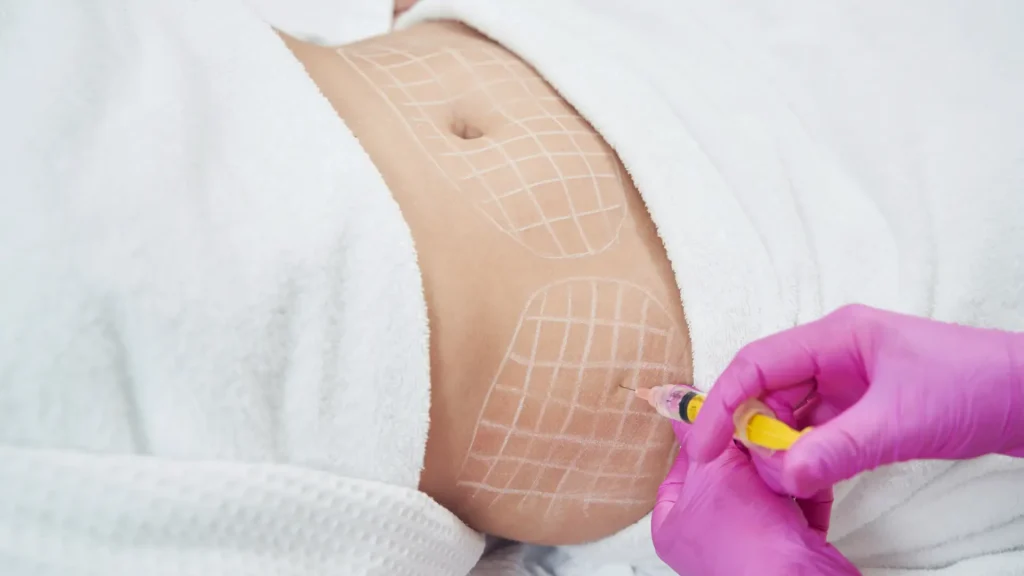
Injection technique is just as important as volume selection. During Aqualyx training, clinicians learn to tailor their approach based on treatment area size, tissue resistance, and patient comfort.
Grid mapping is commonly used for needle-based delivery. A 1 cm x 1 cm grid is drawn over the target area, with a microbolus injected at each point. Gentle massage after each pass helps distribute the product evenly.
Needle Approach
- Volume: 0.2–0.5 mL per injection point
- Spacing: 1 cm between deposits
- Depth: 8–10 mm beneath the skin
- Best for: smaller areas such as the submental zone, jowls, and arms
Cannula Approach
- Volume: 1 mL per linear pass
- Technique: fan pattern with retract-inject strokes
- Depth: 10–15 mm below the surface
- Best for: broader areas like the abdomen, flanks, or outer thighs
Both methods have their place. Cannulas offer less trauma in larger zones, while needles provide high precision in delicate areas. The choice should be based on clinical training, anatomical considerations, and patient preference.
Aqualyx Dosage: Safety Considerations & Session Planning
To reduce risk and improve outcomes, practitioners should always operate within established safety parameters and apply careful session planning. This includes not only product selection but also screening protocols and treatment limits.
Key safety considerations include:
- Contraindications: hypersensitivity to deoxycholate, pregnancy, lactation, autoimmune disease, or active infection
- Adhere to a maximum dose of 40 mL per session
- Do not exceed 25 mL per anatomical zone
- Use aseptic technique and avoid injection into superficial vessels or nerves
- Observe for swelling, nodules, or tenderness, which are common but generally self-limiting
To aid lymphatic clearance, practitioners should space treatments at least four weeks apart. During this time, tissue healing occurs, and the body begins processing the released fat. They should also advise patients to stay hydrated and avoid strenuous activity immediately post-treatment.
Documenting baseline photos, skin measurements, and post-treatment follow-ups can help practitioners refine their approach and make dose adjustments over time based on patient response.
Conclusion
Aqualyx presents a flexible, non-surgical tool for aesthetic fat reduction—but success depends heavily on correct dosage, safe injection practices, and clinical judgment. Understanding the product’s composition and tailoring injection volumes to individual anatomy is key to delivering predictable, high-quality outcomes.
By adhering to clinical guidance on volumes, injection techniques, and patient selection, practitioners can ensure both efficacy and safety. Ongoing training, paired with proper documentation and follow-up, enhances results and minimizes risks, allowing Aqualyx to play a valuable role in body contouring treatments.
FAQs
1. What is the recommended dosage for Aqualyx treatments?
The typical Aqualyx session requires 1–2 vials, depending on the area treated. Smaller regions may need 5–10 mL, while larger areas can require up to 20 mL.
2. How should practitioners administer Aqualyx for the best results?
Practitioners should use a grid or fan injection pattern, inject 0.2–0.5 mL per point, and maintain 1 cm spacing, using depths of 8–15 mm depending on the treatment site.
3. What precautions should practitioners take before administering Aqualyx?
Screen for contraindications, maintain sterile technique, monitor for common side effects, and space treatments four weeks apart to allow safe fat clearance.
References
Goodman GJ, Liew S, Callan P, Hart S. Facial aesthetic injections in clinical practice: Pretreatment and posttreatment consensus recommendations to minimise adverse outcomes. Australas J Dermatol. 2020;61(3):217-225. doi:10.1111/ajd.13273
Marllor Biomedical. AQUALYX World Leading Fat Dissolving Solution. Marllor Biomedical Accessed August 25, 2025. https://easyfairsassets.com/sites/188/2024/07/Aqualyx-doctor-brochure-visual.pdf
